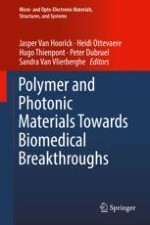2018 | OriginalPaper | Chapter
4. The Use of Photo-Activatable Materials for the Study of Cell Biomechanics and Mechanobiology
Authors : Michelle E. Pede, James H. Henderson
Published in: Polymer and Photonic Materials Towards Biomedical Breakthroughs
Publisher: Springer International Publishing
Activate our intelligent search to find suitable subject content or patents.
Select sections of text to find matching patents with Artificial Intelligence. powered by
Select sections of text to find additional relevant content using AI-assisted search. powered by
